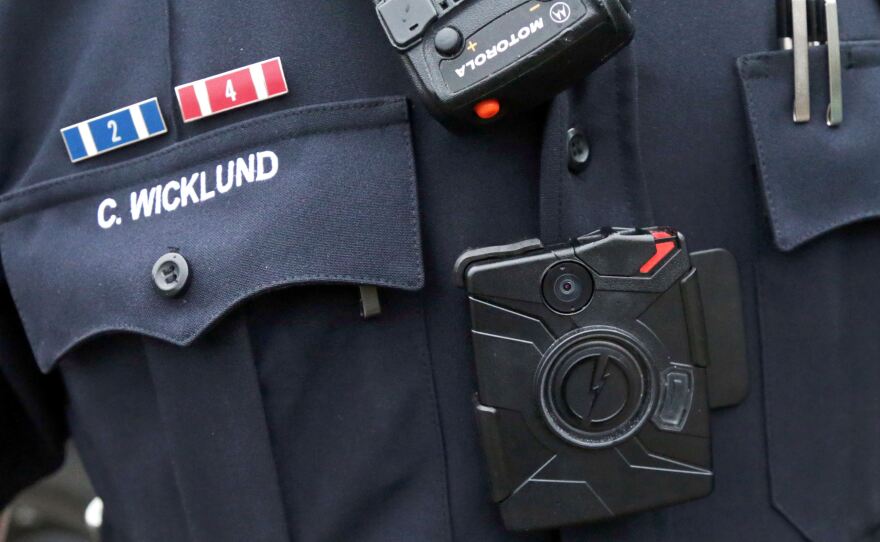San Diego police Chief Shelley Zimmerman announced a change in policy regarding officers' uniform-worn cameras Thursday, a week after a fatal officer-involved shooting raised public concerns because it was not recorded by the involved patrolman's shirt-mounted mini-camcorder.
Previously, officers were directed to activate the audio-video devices just prior to most contacts with citizens — a rule that came with the caveat that doing so was not mandatory if there wasn't sufficient time due to safety issues.
In a statement released Thursday afternoon, the chief said officers "will now be trained to start recording prior to their arrival on radio calls that are likely to result in an enforcement contact."
The revision was prompted by "recent events," including the police shooting seven days ago, SDPD spokesman Matt Tortorella said.
He added, however, that Zimmerman had always intended the policies to be open for alteration based on officers' field experiences.
The department's use of so called body cameras fell under increased scrutiny after Officer Neal Browder opened fire on 42-year-old Fridoon Zalbeg Rawshannehad behind a sex shop in the 3200 block of Hancock Street last Thursday.
Shortly after midnight that morning, Browder encountered Rawshannehad while responding to a report of a knife-wielding man threatening people inside and outside Hi-Lite Theater and Book Store, officials said.
Rawshannehad allegedly advanced on Browder in a dark alley to the rear of the shop and ignored the lawman's commands, prompting the 27-year department veteran to open fire. Medics took Rawshannehad to a hospital, where he was pronounced dead.
At the time of the shooting, the suspect turned out not to have been armed with a knife, though he was carrying some sort of shiny object, according to Hastings. The lieutenant declined to further describe what Rawshannehad allegedly had been holding.
Detectives investigating the officer-involved shooting determined that Browder had not activated his so-called "body camera" during the call, Lt. Mike Hastings told reporters. It was unclear why, the lieutenant said. That question, according to Zimmerman, will be addressed during an internal investigation.
Over the last year, the SDPD has been outfitting hundreds of its sworn personnel with uniform cameras. Department policy directs officers to use the devices to document most public interactions, with some privacy-related exceptions.
The new regulation for using the cameras — officers turning them on before exiting their cruisers or making visual contact with the subjects of calls — promises to refine a program that has ushered in some notable improvements, Zimmerman told reporters outside downtown police headquarters.
In the first six months since adopting the equipment, the department has received fewer complaints about alleged officer conduct and use of force, she said.
Calling herself a "huge proponent" of the devices — which are in use by six of the department's nine divisions, being worn by a total of about 600 officers — Zimmerman said she hoped to have all SDPD patrol personnel using them within the next few months.
The department also has made the cameras part of its academy, with the aim of training cadets to develop "muscle memory" that will condition them to turn on the recorders without even having to think about it, the chief told news crews.







